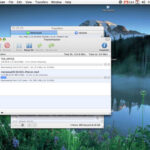The snowglobe seems to have a lot of mystery attached to it–which makes this familiar trinket in pop culture life a bit of a contradiction when it’s supposed to depict or create an element of winter joy. It’s not an American invention, yet still has so many American connections that people might forget that it isn’t a domestic product. And it’s perhaps one of the most fascinating desktop objects that doesn’t really do much other than helping you keep your papers from blowing away via a breeze (shut that window right now if it’s in the dead of winter!) or somehow hypnotizing you with the depiction of a blizzard engulfing a little house or outdoor winter scene. I remember shaking a snowglobe I owned hard enough where it kept a long enough interest to sit for five minutes watching how long it would take before the “snow” would settle down within the water-filled globe. Then you have others who’ve been known to recoil in horror being anywhere close to a snowglobe. What the psychological reasoning is behind that is certainly worth exploring. In fact, any insignificant object in pop culture that has polar opposites of joy and horror reflected onto it should be explored. Hopefully we won’t find out that those who fear them are merely afraid that the snow inside the globe is something resembling asbestos. (Rest easy…it really isn’t.)
I guess we can thank Orson Welles (or maybe that was Herman Mankiewicz’s creation) for bringing the snowglobe into mainstream pop culture in “Citizen Kane.” It was the first time to depict the snowglobe as an object of desire–or of something lost in your childhood that you couldn’t regain. In the case of Charles Foster Kane, the snowy scene in his snowglobe just created a Pavlovian response based merely on his beloved sled, Rosebud, being used by him in those snowy environs of his past before he was taken away from his poor birth family. That theme in movies seemed to evolve over the decades into a particular character acting out a fantasy and wanting to actually live in the scene depicted. Now we have that in a new ABC Family channel TV-movie for the holidays this year called “Snowglobe” and marketed toward Tweens. This gives the indication that snowglobes have a hypnotic quality to them that maybe people of European descent can trace back in their ancestral DNA.
Well, I can’t give credit to the United Kingdom for inventing the snowglobe as much as you’d think it could have originated there. Most articles I write, I can give them credit for starting practically everything–at least in the entertainment world. Instead, the snowglobe has its origins in France according to public record. That gives a few more invention (or variation on the paperweight) points to France as they probably don’t hesitate to celebrate over. We can give credit to the U.K., however, for making snowglobes a major part of Victorian home life later during the late 1800’s and early 1900’s. This enabled the snowglobe to jump the pond to America around that same time period and become a common sight on someone’s Victorian-designed desk. It seems plausible that the French would be inventive enough to think about filling a miniature glass globe with water and adding materials that create a snowy scene in the woods or around a tiny abode. “Citizen Kane” subsequently took on a complex (or maybe very European) vision of a snowglobe being dropped and shattering on the floor…hence creating a haunting vision that could have resonated with many for decades.
That’s what little snowglobes are made of…
I suspect that those who have a psychological fear of snowglobes (and, yes, there are some out there) aren’t really scared of the materials inside the globe that gives the illusion of a snowy blizzard. In the past, snowglobes were made out of materials that might be considered not very environmentally friendly should the globe shatter. The Victorian era snowglobes generally used bone chips or pieces of porcelain to mimic the snow. Later on, it was gold foil particles and even soap flakes that could probably harm someone’s health if ingested via a globe-shattering accident near the person. Nowadays, it’s merely white plastic that couldn’t be friendlier to the environment and someone’s lungs. But globe shatterings are probably less frequent now ever since companies started making the glass thicker and sturdier. That means a potential bedridden Charles Foster Kane today probably wouldn’t have his vision of Rosebud shattered on his bedroom floor and soaked in a puddle of water.
Speaking of water–the liquid inside the globe is pretty much equivalent to what you’d put in your car’s air conditioner. That’s right, antifreeze is used with the water in today’s snowglobes. From all appearances of the globe shatter in “Citizen Kane”, however–it appeared to be light oil that was used more commonly in snowglobes made during the first half of the 20th century. And that phenomenon I’ve experienced of being hypnotized by the blizzard of snow for at least ten minutes is thanks to the compounds in the antifreeze (glycerin and glycol) making the illusion of falling flakes lasting longer. I guess it pays, too, to have snowglobes in the trunk of your car ready to crack open during summer in case your air conditioner goes out and you can’t get to a gas station any time soon.
The settings inside a snowglobe run the gamut from the expected Christmas themes to just about every other setting imaginable. It’s quite fascinating to note that when France celebrated the centennial of their revolution in 1889, some of their early snowglobes produced merely used a miniature of the brand-new Eiffel Tower. While highly sought after today–the idea of depicting a snowstorm happening around the Eiffel Tower isn’t usually the typical scene you think of in winter. But the natural environment depictions were enhanced by the British later and is where we’ve all developed our emotions behind the true essence of a snowglobe.
Shaken and stirred by a snowglobe…
I’ve never known what the exact phobia name is for people who don’t like snowglobes, and it may not even exist because of it being rare. Nevertheless, some people don’t want to be in the same room with them–and it may all stem from how the snowglobe has been depicted in pop culture more recently. One of the most telling examples was a widely quoted line from the ever-protracted ABC TV series “Lost” and a line from the Desmond character where he made an apparently metaphorical reference to the island being impossible to escape from because it seemed to be engulfed in a snowglobe. Of course, we’d all write angry letters if “Lost” ends its complex run someday with a little kid looking into a snowglobe sitting on his desk that contains a little island inside the globe. The old 80’s TV series “St. Elsewhere” just barely managed to get away with that theme when it ended its series run with the insinuation that the imagination in children (in this case, an autistic child) might just get more complex than we think when staring at a snowglobe in their rooms. If any child can think up an entire TV series through that method, then the networks know where to turn for good writers.
The general feeling of claustrophobia within any scene (wintry or not) might also trigger an uncomfortable reaction of some kind. And, as I mentioned before, the thought of one of the globes falling on the floor breaking could be a recurring fear. Even though they used to shatter much more violently if falling off a high ledge due to being made of lead glass, the sturdier glass used now probably wouldn’t make them shatter and scatter the white plastic pieces inside all over you. However, if used like a deadly weapon as Richard Gere did in the movie “Unfaithful”–then it’s no wonder the snowglobe has been given an eerie stigma for a certain group of sensitive people.
I have a hunch, though, that more people find positive attributes with snowglobes than fear them. Maybe that ABC Family channel movie called “Snowglobe” (starring Christina Milian and Lorraine Bracco) is helping get a younger generation off on the right foot about snowglobes and how they can be a starting ground for imagining a romantic fantasy. In the plot of this TV movie, it borders close to a nostalgic (or let’s just say quixotic) dream world–mainly because the snowglobe belongs to the main character’s grandmother. A Christmas-themed fantasy world obviously suits the nostalgia elements, even though it’s also a classic teen romantic fairy tale. As a non-pre-screening guess, the ending will most likely make the viewer wonder if the Christmas world in the snowglobe was real or just pure imagination.
Let’s not forget, too, how males might view the snowglobe here. Just mimicking the feeling of a massive snowstorm over a wintry scene (or maybe a Disney or other pop culture figure as an example of various snowglobe themes) is enough to incite a psychological feeling of well-being. I’ve never failed to see any of my fellow gender peers not notice a snowglobe in a friend’s room without picking it up, shaking it violently and then watch the blizzard unfold. Kids want snow…and they want it right now! As simple of a psychological response as this is–it provides a quick fix to one of the best winter dreams both boys AND girls have during a heatwave in late fall while doing homework in their rooms.
All these more positive angles could prove that the snowglobe may have hope yet as being mostly the stuff that dreams are made of rather than a particular Maltese Falcon. Although I’m sure you could also find a Maltese Falcon snowglobe theme somewhere…


